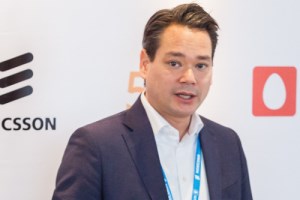Ericsson and MediaTek in 5G New Radio voice success

Hannes Ekström of Ericssson
Conducted at the Ericsson Lab in Kista in early December, the interoperability test involved the use of an end-to-end solution from Ericsson and Dimensity 1000 commercial chipset from MediaTek deployed on a 3.5GHz TDD band.
With Standalone New Radio (SA NR), a 5G-enabled device does not need to rely on 4G technology to make 5G voice (VoNR) calls. With the arrival of standalone NR access, voice and other communication services will need to be provided, requiring the 5G network to support native voice calling services for 5G smartphones. Using VoNR on SA architecture, service providers will be able to offer voice services on 5G-voice-capable devices as well as enhanced mobile broadband (eMBB) services to consumers and business users.
Hannes Ekström, head of product line 5G RAN, Ericsson, says: “Although 5G is closely associated with superior data-transfer capabilities, voice services remain essential for mobile users. So 5G phones are expected to provide all the capabilities of 4G phones in addition to new 5G features and services. Ensuring continued voice services on 5G devices must therefore be addressed properly.
“With multivendor interoperability, we can help our customers provide voice support for 5G SA. This shows our readiness with a complete 5G network solution tested with 5G chipsets, paving the way for native voice services on commercial 5G devices.”
Ericsson has collaborated with MediaTek on performing interoperability tests spanning SA NR, 5G Core and IP Multimedia Subsystem (IMS) to ensure that voice support is enabled as service providers evolve their 4G networks to 5G. The two partners have also successfully tested Evolved Packet System (EPS) Fallback for situations where SA is not available.
JS Pan, general manager of Wireless System Design and Partnership, MediaTek, says, “As a 5G leader, MediaTek is committed to bringing unrivaled 5G experiences to consumers around the world. This technology milestone will let device makers support native voice calling services on 5G networks, providing users with a seamless connectivity experience as SA 5G networks are rolled out in the coming year.”
SA NR networks will enable a range of new services and simplify network architecture.
The first commercial 5G smartphones on the market use dual-mode connectivity to make voice calls over 4G but uses 5G for data boost. The next step in the network evolution is to tap 5G to accommodate data traffic while using 4G for voice calls with EPS Fallback. The final step, however, will involve avoiding dependence on 4G altogether, with the exclusive use of 5G (NR standalone) for both voice and data services.
Today, Ericsson enables every step of this network evolution through its 5G portfolio, which includes 5G radio access, IMS, and 5G Core with the dual-mode 5G Cloud Core capability.
Comment on this article below or via Twitter @IoTGN
